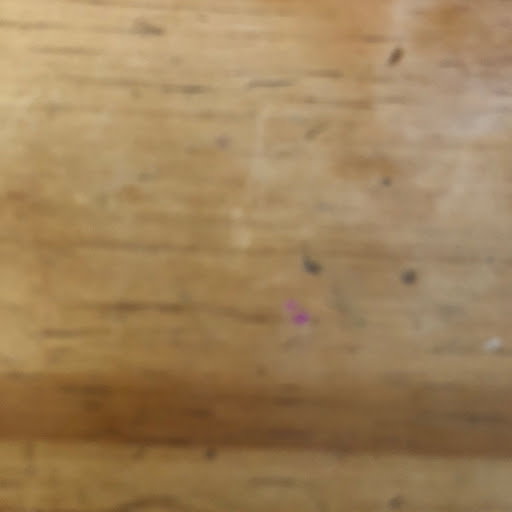Kenneth J Peterson
age ~46
from Mesa, AZ
- Also known as:
-
- Kenneth I Peterson
- Kenneth R Peterson
- Kenneth J Petersen
- Ken R Peterson
Kenneth Peterson Phones & Addresses
- Mesa, AZ
- Fort Wainwright, AK
- Fairbanks, AK
- Gilbert, AZ
- Rio Rancho, NM
- Maricopa, AZ
Medicine Doctors

Dr. Kenneth B Peterson, Scottsdale AZ - MD (Doctor of Medicine)
view sourceSpecialties:
Internal Medicine
Address:
9501 E Shea Blvd, Scottsdale, AZ 85260
4806270965 (Phone)
8209 E Del Campo Dr, Scottsdale, AZ 85258
6023160251 (Phone)
4806270965 (Phone)
8209 E Del Campo Dr, Scottsdale, AZ 85258
6023160251 (Phone)
Certifications:
Internal Medicine, 1986
Awards:
Healthgrades Honor Roll
Languages:
English
Education:
Medical School
University Of Arizona
Medical School
Banner Good Samaritan Medical Center
University Of Arizona
Medical School
Banner Good Samaritan Medical Center

Kenneth B. Peterson
view sourceSpecialties:
Family Medicine, Sports Medicine
Work:
VA Black Hills Health Care System
113 Comanche Rd, Fort Meade, SD 57741
6053472511 (phone), 6057207171 (fax)
113 Comanche Rd, Fort Meade, SD 57741
6053472511 (phone), 6057207171 (fax)
Education:
Medical School
University of South Dakota Sanford School of Medicine
Graduated: 1980
University of South Dakota Sanford School of Medicine
Graduated: 1980
Procedures:
Cardiac Stress Test
Pulmonary Function Tests
Pulmonary Function Tests
Conditions:
Osteoarthritis
Peripheral Nerve Disorders
Anxiety Dissociative and Somatoform Disorders
Anxiety Phobic Disorders
Burns
Peripheral Nerve Disorders
Anxiety Dissociative and Somatoform Disorders
Anxiety Phobic Disorders
Burns
Languages:
English
Description:
Dr. Peterson graduated from the University of South Dakota Sanford School of Medicine in 1980. He works in Fort Meade, SD and specializes in Family Medicine and Sports Medicine. Dr. Peterson is affiliated with VA Black Hills Healthcare System.

Kenneth B. Peterson
view sourceSpecialties:
Internal Medicine
Work:
Kenneth B Peterson MD
8209 E Del Campo Dr, Scottsdale, AZ 85258
6023160251 (phone)
8209 E Del Campo Dr, Scottsdale, AZ 85258
6023160251 (phone)
Education:
Medical School
University of Arizona College of Medicine at Tucson
Graduated: 1982
University of Arizona College of Medicine at Tucson
Graduated: 1982
Languages:
English
Spanish
Spanish
Description:
Dr. Peterson graduated from the University of Arizona College of Medicine at Tucson in 1982. He works in Scottsdale, AZ and specializes in Internal Medicine.

Kenneth D. Peterson
view sourceSpecialties:
Chiropractor
Work:
Peterson Clinic
1002 W Elm Ave, Hermiston, OR 97838
5415676277 (phone), 5415679055 (fax)
1002 W Elm Ave, Hermiston, OR 97838
5415676277 (phone), 5415679055 (fax)
Languages:
English
Description:
Dr. Peterson works in Hermiston, OR and specializes in Chiropractor.

Kenneth S. Peterson
view sourceSpecialties:
Family Medicine
Work:
UMass Memorial Medical GroupPlumley Village Health Services
116 Belmont St RM 11, Worcester, MA 01605
5083341102 (phone), 5087951739 (fax)
116 Belmont St RM 11, Worcester, MA 01605
5083341102 (phone), 5087951739 (fax)
Languages:
English
Spanish
Spanish
Description:
Mr. Peterson works in Worcester, MA and specializes in Family Medicine. Mr. Peterson is affiliated with UMASS Memorial Medical Center.
Us Patents
-
Protection Of Microelectronic Devices During Packaging
view source -
US Patent:6335224, Jan 1, 2002
-
Filed:May 16, 2000
-
Appl. No.:09/572562
-
Inventors:Kenneth A. Peterson - Albuquerque NM
William R. Conley - Tijeras NM -
Assignee:Sandia Corporation - Albuquerque NM
-
International Classification:H01L 2144
-
US Classification:438114, 438460, 438465, 438113
-
Abstract:The present invention relates to a method of protecting a microelectronic device during device packaging, including the steps of applying a water-insoluble, protective coating to a sensitive area on the device; performing at least one packaging step; and then substantially removing the protective coating, preferably by dry plasma etching. The sensitive area can include a released MEMS element. The microelectronic device can be disposed on a wafer. The protective coating can be a vacuum vapor-deposited parylene polymer, silicon nitride, metal (e. g. aluminum or tungsten), a vapor deposited organic material, cynoacrylate, a carbon film, a self-assembled monolayered material, perfluoropolyether, hexamethyldisilazane, or perfluorodecanoic carboxylic acid, silicon dioxide, silicate glass, or combinations thereof. The present invention also relates to a method of packaging a microelectronic device, including: providing a microelectronic device having a sensitive area; applying a water-insoluble, protective coating to the sensitive area; providing a package; attaching the device to the package; electrically interconnecting the device to the package; and substantially removing the protective coating from the sensitive area.
-
Pre-Release Plastic Packaging Of Mems And Imems Devices
view source -
US Patent:6379988, Apr 30, 2002
-
Filed:May 16, 2000
-
Appl. No.:09/572720
-
Inventors:Kenneth A. Peterson - Albuquerque NM
William R. Conley - Tijeras NM -
Assignee:Sandia Corporation - Albuquerque NM
-
International Classification:H01L 2100
-
US Classification:438 51, 438 55, 438 64, 438106, 438115, 438116, 438125
-
Abstract:A method is disclosed for pre-release plastic packaging of MEMS and IMEMS devices. The method can include encapsulating the MEMS device in a transfer molded plastic package. Next, a perforation can be made in the package to provide access to the MEMS elements. The non-ablative material removal process can include wet etching, dry etching, mechanical machining, water jet cutting, and ultrasonic machining, or any combination thereof. Finally, the MEMS elements can be released by using either a wet etching or dry plasma etching process. The MEMS elements can be protected with a parylene protective coating. After releasing the MEMS elements, an anti-stiction coating can be applied. The perforating step can be applied to both sides of the device or package. A cover lid can be attached to the face of the package after releasing any MEMS elements. The cover lid can include a window for providing optical access.
-
Microelectronic Device Package With An Integral Window
view source -
US Patent:6384473, May 7, 2002
-
Filed:May 16, 2000
-
Appl. No.:09/571335
-
Inventors:Kenneth A. Peterson - Albuquerque NM
Robert D. Watson - Tijeras NM -
Assignee:Sandia Corporation - Albuquerque NM
-
International Classification:H01L 2302
-
US Classification:257680, 257778, 257682, 257693, 257698, 257704, 257737, 257738, 257779, 257780
-
Abstract:An apparatus for packaging of microelectronic devices, including an integral window. The microelectronic device can be a semiconductor chip, a CCD chip, a CMOS chip, a VCSEL chip, a laser diode, a MEMS device, or a IMEMS device. The package can include a cofired ceramic frame or body. The package can have an internal stepped structure made of one or more plates, with apertures, which are patterned with metallized conductive circuit traces. The microelectronic device can be flip-chip bonded on the plate to these traces, and oriented so that the light-sensitive side is optically accessible through the window. A cover lid can be attached to the opposite side of the package. The result is a compact, low-profile package, having an integral window that can be hermetically-sealed. The package body can be formed by low-temperature cofired ceramic (LTCC) or high-temperature cofired ceramic (HTCC) multilayer processes with the window being simultaneously joined (e. g. cofired) to the package body during LTCC or HTCC processing.
-
Packaging Of Electro-Microfluidic Devices
view source -
US Patent:6443179, Sep 3, 2002
-
Filed:Feb 21, 2001
-
Appl. No.:09/790423
-
Inventors:Gilbert L. Benavides - Albuquerque NM
Paul C. Galambos - Albuquerque NM
John A. Emerson - Albuquerque NM
Kenneth A. Peterson - Albuquerque NM
Rachel K. Giunta - Albuquerque NM
Robert D. Watson - Tijeras NM -
Assignee:Sandia Corporation - Albuquerque NM
-
International Classification:F16K 2700
-
US Classification:1374542, 137597, 2851201
-
Abstract:A new architecture for packaging surface micromachined electro-microfluidic devices is presented. This architecture relies on two scales of packaging to bring fluid to the device scale (picoliters) from the macro-scale (microliters). The architecture emulates and utilizes electronics packaging technology. The larger package consists of a circuit board with embedded fluidic channels and standard fluidic connectors (e. g. Fluidic Printed Wiring Board). The embedded channels connect to the smaller package, an Electro-Microfluidic Dual-Inline-Package (EMDIP) that takes fluid to the microfluidic integrated circuit (MIC). The fluidic connection is made to the back of the MIC through Bosch-etched holes that take fluid to surface micromachined channels on the front of the MIC. Electrical connection is made to bond pads on the front of the MIC.
-
Sealed Symmetric Multilayered Microelectronic Device Package With Integral Windows
view source -
US Patent:6489670, Dec 3, 2002
-
Filed:Feb 1, 2002
-
Appl. No.:10/061422
-
Inventors:Kenneth A. Peterson - Albuquerque NM
Robert D. Watson - Tijeras NM -
Assignee:Sandia Corporation - Albuquerque NM
-
International Classification:H01L 2302
-
US Classification:257686, 257434, 257433, 257480, 257685, 257704, 257711, 257678, 257684, 257737, 257774, 257780
-
Abstract:A sealed symmetric multilayered package with integral windows for housing one or more microelectronic devices. The devices can be a semiconductor chip, a CCD chip, a CMOS chip, a VCSEL chip, a laser diode, a MEMS device, or a IMEMS device. The multilayered package can be formed of a low-temperature cofired ceramic (LTCC) or high-temperature cofired ceramic (HTCC) multilayer processes with the windows being simultaneously joined (e. g. cofired) to the package body during LTCC or HTCC processing. The microelectronic devices can be flip-chip bonded and oriented so that the light-sensitive sides are optically accessible through the windows. The result is a compact, low-profile, sealed symmetric package, having integral windows that can be hermetically-sealed.
-
Bi-Level Multilayered Microelectronic Device Package With An Integral Window
view source -
US Patent:6495895, Dec 17, 2002
-
Filed:Feb 1, 2002
-
Appl. No.:10/062220
-
Inventors:Kenneth A. Peterson - Albuquerque NM
Robert D. Watson - Tijeras NM -
Assignee:Sandia Corporation - Albuquerque NM
-
International Classification:H01L 310203
-
US Classification:257434, 257686, 257778, 257433, 257432, 257680, 257685, 257777, 257780, 257779, 257784, 257704, 257738
-
Abstract:A bi-level, multilayered package with an integral window for housing a microelectronic device. The device can be a semiconductor chip, a CCD chip, a CMOS chip, a VCSEL chip, a laser diode, a MEMS device, or a IMEMS device. The multilayered package can be formed of a low-temperature cofired ceramic (LTCC) or high-temperature cofired ceramic (HTCC) multilayer processes with the window being simultaneously joined (e. g. cofired) to the package body during LTCC or HTCC processing. The microelectronic device can be flip-chip bonded and oriented so that the light-sensitive side is optically accessible through the window. A second chip can be bonded to the backside of the first chip, with the second chip being wirebonded to the second level of the bi-level package. The result is a compact, low-profile package, having an integral window that can be hermetically-sealed.
-
Gold-Based Electrical Interconnections For Microelectronic Devices
view source -
US Patent:6500760, Dec 31, 2002
-
Filed:Aug 2, 2001
-
Appl. No.:09/922518
-
Inventors:Kenneth A. Peterson - Albuquerque NM
Stephen E. Garrett - Albuquerque NM
Cathleen A. Reber - Corrales NM
Robert D. Watson - Tijeras NM -
Assignee:Sandia Corporation - Albuquerque NM
-
International Classification:H01L 21302
-
US Classification:438684, 438586, 438686, 438687
-
Abstract:A method of making an electrical interconnection from a microelectronic device to a package, comprising ball or wedge compression bonding a gold-based conductor directly to a silicon surface, such as a polysilicon bonding pad in a MEMS or IMEMS device, without using layers of aluminum or titanium disposed in-between the conductor and the silicon surface. After compression bonding, optional heating of the bond above 363 C. allows formation of a liquid gold-silicon eutectic phase containing approximately 3% (by weight) silicon, which significantly improves the bond strength by reforming and enhancing the initial compression bond. The same process can be used for improving the bond strength of AuâGe bonds by forming a liquid Au-12Ge eutectic phase.
-
Method Of Fabricating A Microelectronic Device Package With An Integral Window
view source -
US Patent:6531341, Mar 11, 2003
-
Filed:May 16, 2000
-
Appl. No.:09/573424
-
Inventors:Kenneth A. Peterson - Albuquerque NM
Robert D. Watson - Tijeras NM -
Assignee:Sandia Corporation - Albuquerque NM
-
International Classification:H01L 2144
-
US Classification:438123, 438121, 438125, 257680
-
Abstract:A method of fabricating a microelectronic device package with an integral window for providing optical access through an aperture in the package. The package is made of a multilayered insulating material, e. g. , a low-temperature cofired ceramic (LTCC) or high-temperature cofired ceramic (HTCC). The window is inserted in-between personalized layers of ceramic green tape during stackup and registration. Then, during baking and firing, the integral window is simultaneously bonded to the sintered ceramic layers of the densified package. Next, the microelectronic device is flip-chip bonded to cofired thick-film metallized traces on the package, where the light-sensitive side is optically accessible through the window. Finally, a cover lid is attached to the opposite side of the package. The result is a compact, low-profile package, flip-chip bonded, hermetically-sealed package having an integral window.
Name / Title
Company / Classification
Phones & Addresses
Director
Norelco Cabinets Ltd
Kitchen Cabinets & Equipment. Cabinets. Cabinet Maker. Cabinet Hardware. Kitchen Planning & Remodelling. Kitchen & Bath Design
Kitchen Cabinets & Equipment. Cabinets. Cabinet Maker. Cabinet Hardware. Kitchen Planning & Remodelling. Kitchen & Bath Design
205 Adams Rd, Kelowna, BC V1X 7R1
2507652121, 2507651540
2507652121, 2507651540
Secretary
Beaver Home Improvements Ltd.
Beaver Home Improvements Ltd.
Contractors-Alteration & Renovation. Siding. Patio Equipment & Supplies. Windows - Installation/Service. Contractors - Framing. Roofing Contractors
Beaver Home Improvements Ltd.
Contractors-Alteration & Renovation. Siding. Patio Equipment & Supplies. Windows - Installation/Service. Contractors - Framing. Roofing Contractors
9685 Agur St, Summerland, BC V0H 1Z2
7785165779, 7785165667
7785165779, 7785165667
Manager
Travel Executives Inc
Security Brokers, Dealers, and Flotation Comp...
Security Brokers, Dealers, and Flotation Comp...
6045 N Scottsdale Rd, Scottsdale, AZ 85250
Desert Sunrise Realty
Real Estate Agents and Managers
Real Estate Agents and Managers
851 N Country Club Dr, Mesa, AZ 85201
Director
Norelco Cabinets Ltd
Kitchen Cabinets & Equipment · Cabinets · Cabinet Maker · Cabinet Hardware · Kitchen Planning & Remodelling · Kitchen & Bath Design
Kitchen Cabinets & Equipment · Cabinets · Cabinet Maker · Cabinet Hardware · Kitchen Planning & Remodelling · Kitchen & Bath Design
2507652121, 2507651540
Manager
Travel Executives Inc
Security Brokers and Dealers · Employment Agencies
Security Brokers and Dealers · Employment Agencies
6045 N Scottsdale Rd, Scottsdale, AZ 85250
4804748000, 4809481991
4804748000, 4809481991
CEO, Chairman
Velocity M.M. Corp
3370 NE 190 St, Miami, FL 33180
382 NE 191 St, Miami, FL 33179
14463 N 28 Way, Phoenix, AZ 85032
382 NE 191 St, Miami, FL 33179
14463 N 28 Way, Phoenix, AZ 85032
Secretary
Beaver Home Improvements Ltd
Contractors-Alteration & Renovation · Siding · Patio Equipment & Supplies · Windows - Installation/Service · Contractors - Framing · Roofing Contractors
Contractors-Alteration & Renovation · Siding · Patio Equipment & Supplies · Windows - Installation/Service · Contractors - Framing · Roofing Contractors
7785165779, 7785165667
Resumes

Business Development
view sourceLocation:
P/O Box 774, Hurricane, UT
Industry:
Food Production
Work:
Sysco
Business Development
Sysco
Food Sales
Business Development
Sysco
Food Sales
Skills:
Food
Food Service
Food Industry
Menu Development
Pricing
Key Account Development
Account Management
Culinary Skills
New Business Development
Restaurants
Food Safety
Inventory Management
Purchasing
Food and Beverage
Strategic Planning
Sales Management
P&L Management
Negotiation
Category Management
Customer Relations
Culinary
Seafood
Budgeting
Food Distribution
Food Service
Food Industry
Menu Development
Pricing
Key Account Development
Account Management
Culinary Skills
New Business Development
Restaurants
Food Safety
Inventory Management
Purchasing
Food and Beverage
Strategic Planning
Sales Management
P&L Management
Negotiation
Category Management
Customer Relations
Culinary
Seafood
Budgeting
Food Distribution

Kenneth Peterson
view source
Kenneth Peterson
view source
Kenneth Peterson
view source
Kenneth Peterson
view source
Kenneth Margaret Peterson
view source
Kenneth Peterson
view source
Kenneth Peterson
view sourceLicense Records
Kenneth W Peterson
License #:
27247 - Expired
Issued Date:
Mar 6, 2009
Renew Date:
Jun 1, 2012
Expiration Date:
Nov 30, 2013
Type:
Certified Public Accountant
Kenneth Mark Peterson
Address:
2290 S Boulder St, Gilbert, AZ 85295
License #:
A2878495
Category:
Airmen
Lawyers & Attorneys

Kenneth D. Peterson - Lawyer
view sourceLicenses:
Montana - Active 1967

Kenneth Peterson - Lawyer
view sourceSpecialties:
General
ISLN:
904469781
Admitted:
1980
University:
Walla Walla College, A.B.
Law School:
Willamette University, J.D.

Kenneth Peterson - Lawyer
view sourceSpecialties:
Complex Tort Litigation
Product Liability Defense
National Product Liability Program Management
Tort Class Action
Environmental & Toxic Tort Litigation
Construction Litigation
Insurance Coverage Litigation
Commercial Litigation
Contracts
Breach of Warranty
Creditors' Rights
Transactional Assistance
Alternative Dispute Resolution
Negotiation
Mediation
Arbitration
Labor & Employment Law
Discrimination, Harassment, Retaliation, Whistleblower & Other Employment Law Matters
Wage & Hour Compliance & Litigation
Trade Secrets & Unfair Competition Advice & Litigation
Workplace Investigations
Training Programs
Transportation
Appellate Practice
Automotive & Automotive Components
Consumer Products
Professional Services
Personal Injury
Product Liability Defense
National Product Liability Program Management
Tort Class Action
Environmental & Toxic Tort Litigation
Construction Litigation
Insurance Coverage Litigation
Commercial Litigation
Contracts
Breach of Warranty
Creditors' Rights
Transactional Assistance
Alternative Dispute Resolution
Negotiation
Mediation
Arbitration
Labor & Employment Law
Discrimination, Harassment, Retaliation, Whistleblower & Other Employment Law Matters
Wage & Hour Compliance & Litigation
Trade Secrets & Unfair Competition Advice & Litigation
Workplace Investigations
Training Programs
Transportation
Appellate Practice
Automotive & Automotive Components
Consumer Products
Professional Services
Personal Injury
ISLN:
904469828
Admitted:
1982
University:
Northwestern University, B.S.
Law School:
Georgetown University Law Center, J.D., 1982

Kenneth Peterson - Lawyer
view sourceISLN:
904469811
Admitted:
1972
University:
University of Illinois, B.A., 1968
Law School:
University of Illinois, J.D., 1972

Kenneth Peterson - Lawyer
view sourceSpecialties:
Worker's Compensation
ISLN:
904469804
Admitted:
1975
University:
Stanford University, A.B., 1971
Law School:
Hastings College of the Law, University of California, J.D., 1975
Googleplus

Kenneth Peterson
Work:
Writers Of The Chosen - Owner/boss

Kenneth “Theonlykcp” Pete...

Kenneth Peterson

Kenneth Peterson

Kenneth Peterson

Kenneth Peterson

Kenneth Peterson

Kenneth Peterson
Flickr
Youtube
Myspace
Plaxo

Kenneth W. Peterson
view sourcePresident at The Primacy Club LLC

Kenneth Peterson
view sourcemy

Kenneth Peterson
view sourceQuality Mortgage Lending

Kenneth Dusty Peterson
view source
Kenneth A Peterson
view source
Kenneth Lewis Peterson
view source
Kenneth Peterson
view source
Kenneth Peterson
view source
Kenneth D Peterson
view source
Kenneth Charles Peterson
view source
Kenneth Douglas Peterson
view sourceClassmates

Kenneth Peterson, Darby H...
view source
Kenneth Peterson | Blacks...
view source
kenneth peterson | North ...
view source
Kenneth Peterson, Mass Hi...
view source
Kenneth Peterson | Bowlin...
view source
Kenneth Peterson, Eden Hi...
view source
Kenneth Peterson | Baypor...
view source
Kenneth Peterson, Carlmon...
view sourceGet Report for Kenneth J Peterson from Mesa, AZ, age ~46


















